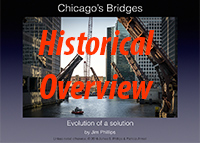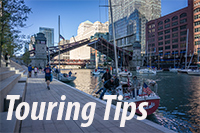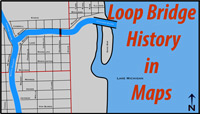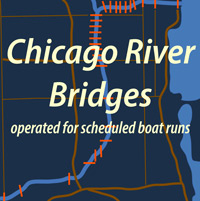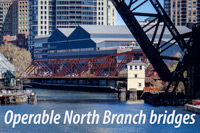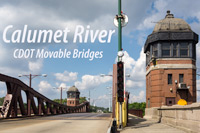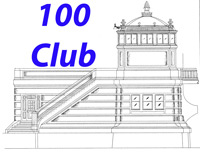Bridge tender house (bridgehouse) is the structure at the entrance to the bridge that houses the control equipment to raise the bridge. There may be as many as four, or only one on a bridge. For the older bridges, one house was required for each leaf. The modern bridges are controlled from one house. (Older bridges with four houses had two functional and two ornamental.)
Rack and pinion is the gearing system that moves the bridge. The pinion is a round gear driven by an electric motor. This gear is meshed in a toothed track (rack) attached to the bridge leaf. As the pinion is rotated by the motor, it moves the rack which in turn raises or lowers the bridge leaf. The rack and pinion can be seen on bridges with through or pony trusses ( N. Clark St., N. La Salle St., N. Wells St., N. Franklin St., W. Lake St., W. Washington Blvd.). Racks are also visible from the lower decks of the N. Lake Shore Dr. and N. Michigan Ave. bridges. A video of the rack and pinion operating on the W. Lake Street bridge is shown below photo.

Deck is the horizontal surface that carries the traffic over the river. A double deck bridge carries two levels of traffic over the river.
Beams are horizontal structural members that support the bridge decks.
A Truss is a type of beam that is made up of triangular elements. Sixteen of the bridges here are supported by trusses. There are four categories employed here.
Deck trusses have all supporting members below the roadway (considered the most aesthetic). The bridge at W. Jackson Blvd. (left photo) is an example of a deck truss. Compare the above deck railings on this bridge with the above deck structure of the other truss types.
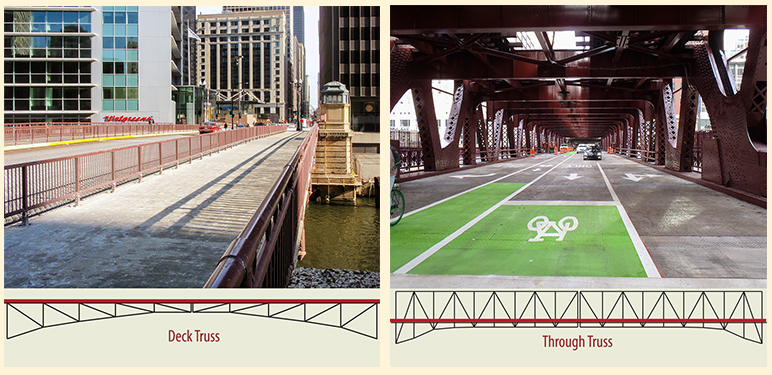
Through trusses, have all supporting members above the roadway (considered the least aesthetic). The bridge at N. Wells St. (right photo) is an example of a through truss.
Pony and Rail Height trusses have supporting members both above and below the roadway (aesthetic compromise). The difference between these two categories is how far above the deck the top chord of the truss extends. As the name implies, the rail height truss extends above the deck to a height of about 3 feet (right photo - W. Madison St.). As seen at the N. La Salle St. bridge (left photo), the pony truss extends much higher above the deck than the rail height truss.

Box Girders are hollow rectangular beams assembled from four pieces of steel. The bridge at W. Randolph St. uses box girders.
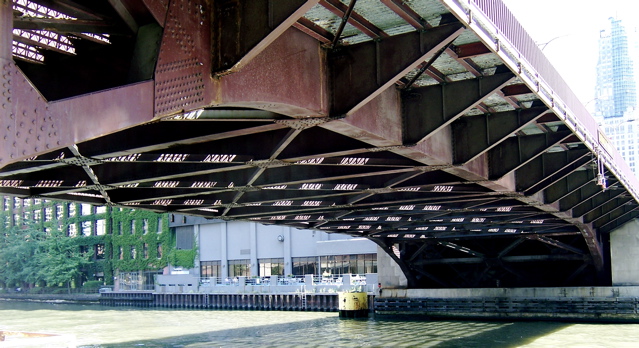
Tail pit is the area below the road surface at the rivers' edge. It accommodates the counterweight and lifting machinery of the bridge.
Counterweight is a mass of material, usually a mix of concrete and iron or steel, that aids in the rotation of the leaf (see concepts).

